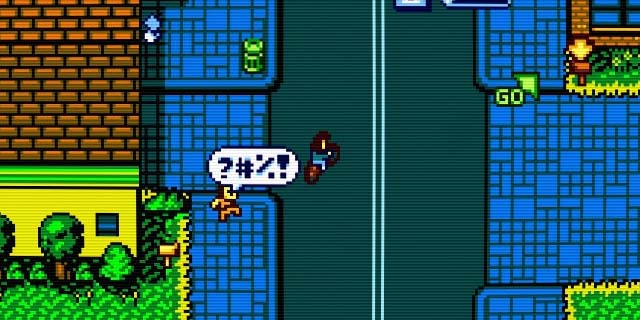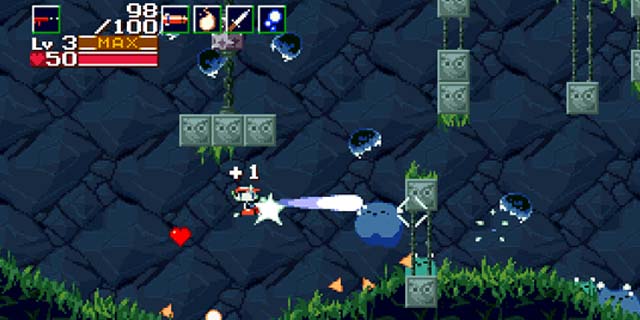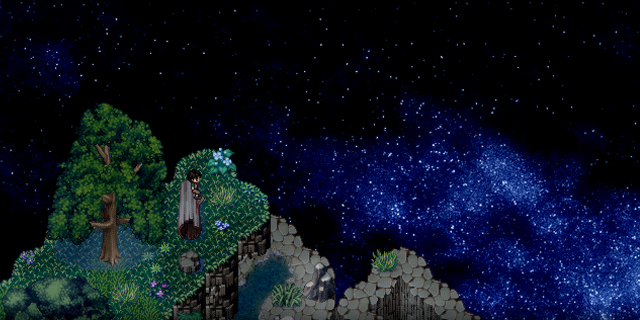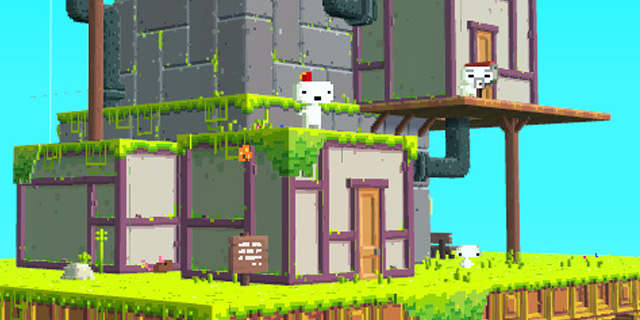![]()
Sometimes I see people say they’re sick of games attempting an 8-bit (or 16-bit) style. I have to step back and think about what they are saying and why they are saying it. Developers often choose to design games, either just graphically or also mechanically, like the classics not because of a lack of budget but because that era represents a golden age in gaming history. Many developers find it appropriate to take their games back to that time and make their games have a retro look or feel. Sometimes it’s simply for nostalgic purposes, and others because they feel it is truly appropriate for the game they are creating.
It is a trend that continues to be an ever-present part of the industry and one that will most likely never die, and I couldn’t be happier.
Trends in the gaming industry can outstay their welcome quickly, which might be why a lot of people tend to see the retro-styling of games like Fez, Cave Story and the upcoming Retro City Rampage as a negative. I will always welcome it. Why? Because, to me, that 8-or-16-bit look and feel that games have will never get old. It allows developers to escape the “brown and gray” trend that, for many people, summarizes this entire generation of games’ artistic quality. While I don’t necessarily agree with that and think people tend to exaggerate when it comes to the look of a lot of current-gen games, there was a time when it felt like our industry had lost its creative spirit in terms of pure artistry. This certainly isn’t true today, but there’s a reason why people felt this way.

This all stems from the fact that I love pixels. That visual aesthetic always felt truly inspired to me even it’s fairly simplistic at its core. If done well, these visuals can inspire just as much as they did twenty or more years ago. Sometimes this style can feel unoriginal, or developers try so hard to capture the look of retro games without attempting to develop what made those games so memorable to begin with. The look is simply the base; the starting point for something greater. I will always be insanely curious about games with 8-bit and 16-bit graphics because of my love for that era, but there will always need to be more to the experience to help it stand out.
The music in these retro-style games usually works on multiple levels. I respect composers who were able to create some of the most memorable game soundtracks of all time on 8 and 16-bit systems. They had major limitations that held them back, but this just allowed them to be a bit more creative, which in turn led us to some memorable music. Any composers that hark back to that era of video game music for inspiration are doing something truly special. They may not be working with the same limitations, but they force themselves to go all of the way with it and create music sounds genuine.

The Cave Story soundtrack is a perfect example of how a composer can strive to do something new with a well-worn formula. Each song sounds unique, but also like they could be ripped right from a game you might have played on your NES. It’s a hard balance to strike; how do you create music that is reminiscent of the games you loved growing up while trying to make them sound as original as possible? If anything, these restrictions placed on composers lead to the same (if not better) results than what we heard during those specific eras in gaming.
Not all games need to rely on chiptunes to make their experience feel authentic. To the Moon is a game with a look that seems straight out of the 16-bit era, but the music is all fully orchestrated. And yet, these beautiful melodies composed for the game sound like they wouldn’t be out of place in Chrono Trigger’s soundtrack, or even an older Final Fantasy title. The inspirations are clear, and yet the music still remains completely unique to that experience. It can be hard to fuse together the past and present of game composition, but if it’s pulled of well enough, you’ll have a soundtrack that both stands on its own and is reminiscent of the days since past.

You can’t have a retro-style game without getting the gameplay right, and thankfully we’ve seen many examples of games that have handled this beautifully. Mechanically speaking, games have a very specific feel to them that can be hard to replicate. The original Castlevania’s jumping mechanics aren’t good, but they add to the experience and make overcoming the game’s many enemies and obstacles rewarding. The 8-bit Mega Man games are similar in how they play; it’s very specific to that series and nothing else. This is why Mega Man 9 and 10 were so popular: they successfully recreated a formula that worked.
But it’s not just about making what worked before work again; it’s also about adding something a little new to the mix. I come back to Fez because it feels like a game I would play on my NES or SNES, but there is something truly about it that puts it above and beyond a lot of games of that nature. The jumping mechanics and controls feel very specific and deliberate; they aren’t great, but they suit the game’s environments perfectly. In that aspect, it’s what you might expect from a game like Fez, but what sets it apart is the rotation mechanic. This aspect and the puzzles that follow are things you would have never seen in a game of that era, and it really is the perfect melding of old and new.
This particular mechanic isn’t entirely new to gaming, but its use in Fez adds a little something extra to a game that could have just been a standard puzzle/platformer. It shows that creating these retro-style games isn’t just about taking what worked before and trying it again. Like with the graphics and the music, you need to throw in something a little different. The game will still feel of a specific era, but it will also feel completely new and exciting.

Not only that, but Fez captures something even more specific that has been missing from games for quite some time, which is the air of mystery that surrounded it at launch. There were many aspects of Fez that remained completely unsolved for days and weeks after the game launched. In the era of the Internet, this sort of thing never happens, and yet everyone who played it was completely stumped. Everyone who really got into the game needed to dig out a notebook and solve puzzles in a way they probably haven’t done in ages. It brought me back to a time when games were still full of surprises and always captured my imagination.
This is why retracing our steps and bringing back what was once old is never a bad thing. Some developers may do it out of sheer laziness, but those games that manage to combine the nostalgia with the new and exciting are the ones that truly succeed. This is why these games are popular and will continue to be popular for many years to come. Sure, maybe you are sick of that 8-bit look or the chiptune music, but look beyond that and see that these games exist for a good reason. They have and will always have a place in our culture, allowing us to briefly step into the past to take something old and bring it together with something new. It’s easy enough to understand, so let’s embrace it and create experiences that will capture our imagination just like they used to.



















